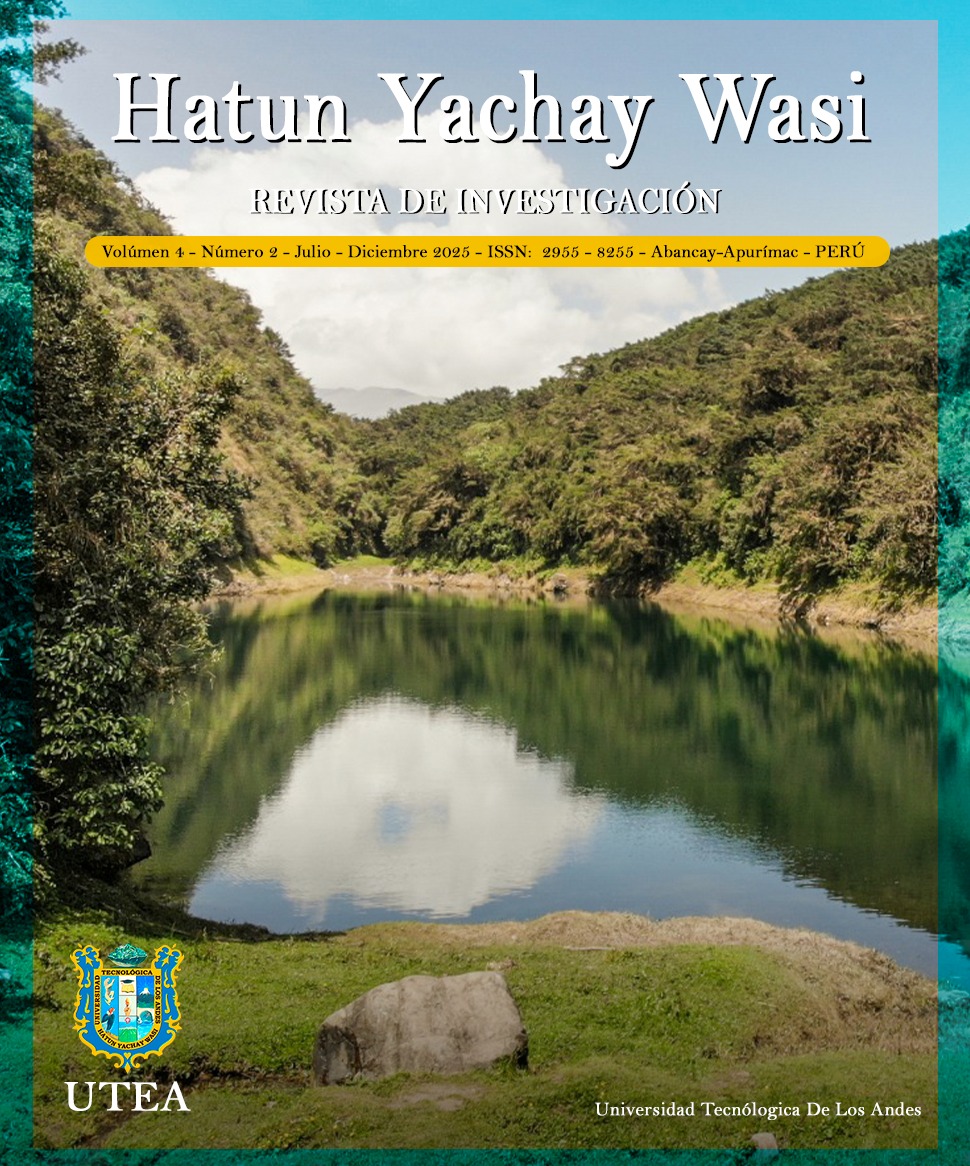Spatial Distribution Models of Hydrocarbons in Contaminated Soils and Their Implementation in GIS Software: A Review
Main Article Content
Abstract
This review analyzes and compares the main models used to represent the spatial distribution of hydrocarbons in contaminated soils, with an emphasis on their implementation in Geographic Information Systems (GIS) environments. Two main approaches were identified: geostatistical methods such as ordinary Kriging and machine learning models such as Random Forest and 3D neural networks. Ordinary Kriging stands out for its balance between accuracy, uncertainty management, and GIS compatibility, compared to the greater complexity of advanced models. It is concluded that ordinary Kriging is the most appropriate model to represent this type of contamination, and its implementation with Python tools is recommended for achieving an automated, accurate, and accessible analysis.
Downloads
Article Details

This work is licensed under a Creative Commons Attribution 4.0 International License.
References
Atteia, O., Dubois, J., & Webster, R. (1994). Geostatistical analysis of soil contamination in the Swiss Jura. Environmental Pollution, 86(3), 315–327. https://doi.org/10.1016/0269-7491(94)90172-4.
Bengtsson, G., & Törneman, N. (2009). A spatial approach to environmental risk assessment of PAH contamination. Risk Analysis, 29(1), 48–61. https://doi.org/10.1111/j.1539-6924.2008.01128.x.
Gao, A., Cheng, L., Wei, X. (2024). Study on the Spatial Distribution and Migration Characteristics of Petroleum Hydrocarbons in Soil Based on Artificial Neural Networks. In: Park, J.S., Yang, L.T., Pan, Y., Park, J.J. (eds) Advances in Computer Science and Ubiquitous Computing. CUTECSA 2023. Lecture Notes in Electrical Engineering, vol 1190. Springer.
Gao, A., Chen, L., Wei, X., Liu, C., & Cheng, L. (2024). Spatial Distribution Prediction and Migration Characteristic of Petroleum Hydrocarbons in Soil Based on Artificial Neural Networks. Journal of Information Processing Systems, 20(6). https://doi.org/10.3745/JIPS.04.0330.
Gu, Y., Zuo, Z., Shi, C., & Hu, X. (2020). Feasibility study for spatial distribution of diesel oil in contaminated soils by laser induced fluorescence. Applied Sciences, 10(3), 1103. https://doi.org/10.3390/app10031103.
Hyde, K., Ma, W., Obal, T., Bradshaw, K., Carlson, T., Mamet, S., & Siciliano, S. (2019). Incremental sampling methodology for petroleum hydrocarbon contaminated soils: volume estimates and remediation strategies. Soil and Sediment Contamination: An International Journal, 28(1), 51-64. https://doi.org/10.1080/15320383.2018.1529736.
Karaca, G. (2016). Spatial distribution of polycyclic aromatic hydrocarbon (PAH) concentrations in soils from Bursa, Turkey. Archives of Environmental Contamination and Toxicology, 70, 406-417. https://doi.org/10.1007/s00244-015-0248-2.
Liang, Y., Zhang, X., Wang, J., & Li, G. (2012). Spatial variations of hydrocarbon contamination and soil properties in oil exploring fields across China. Journal of Hazardous Materials, 241, 371-378. https://doi.org/10.1016/j.jhazmat.2012.09.055.
Liu, G., Niu, J., Guo, W., Zhao, L., Zhang, C., Wang, M., Zhang, Z., & Guo, G. (2017). Assessment of terrain factors on the pattern and extent of soil contamination surrounding a chemical industry in Chongqing, Southwest China. Catena, 156, 237–243. https://doi.org/10.1016/j.catena.2017.04.005.
Liu, G., Zhou, X., Li, Q., Shi, Y., Guo, G., Zhao, L., Wang, J., Su, Y., & Zhang, C. (2020). Spatial distribution prediction of soil As in a large-scale arsenic slag contaminated site based on an integrated model and multi-source environmental data. Environmental Pollution, 267, 115631. https://doi.org/10.1016/j.envpol.2020.115631.
Luca, C., Si, B., & Farrell, R. (2007). Assessing spatial distribution and joint uncertainty of TPH-fractions: Indicator kriging and sequential indicator simulation. Canadian Journal of Soil Science, 87(4), 551–563. DOI:10.4141/CJSS07003.
Mahanty, B., Behera, S., Godio, A., & Chiampo, F. (2025). Hybrid Modeling with Artificial Neural Networks for Predicting In-Situ Bioremediation Dynamics of Diesel Fuel-Spiked Soil. Water Air & Soil Pollution, 236, 285 (2025). https://doi.org/10.1007/s11270-025-07940-0.
Metahni, S., Coudert, L., Gloaguen, E., Guemiza, K., Mercier, G., & Blais, J. (2019). Comparison of different interpolation methods and sequential Gaussian simulation to estimate volumes of soil contaminated by As, Cr, Cu, PCP and dioxins/furans. Environmental Pollution, 252, 409–419. https://doi.org/10.1016/j.envpol.2019.05.122.
Miao, S., Ni, G., Kong, G., Yuan, X., Liu, C., Shen, X., & Gao, W. (2025). A spatial interpolation method based on 3D-CNN for soil petroleum hydrocarbon pollution. PLOS ONE, 20(1), e0316940. https://doi.org/10.1371/journal.pone.0316940.
Ouabo, R., Sangodoyin, A., & Ogundiran, M. (2020). Assessment of ordinary kriging and inverse distance weighting methods for modeling chromium and cadmium soil pollution in e-waste sites in Douala, Cameroon. Journal of Health & Pollution, 10(26), 1–20. https://doi.org/10.5696/2156-9614-10.26.200605.
Parvizi, Y., & Fatehi, S. (2025). Geospatial digital mapping of soil organic carbon using machine learning and geostatistical methods in different land uses. Scientific Reports, 15, 4449. https://doi.org/10.1038/s41598-025-88062-9.
Rakotonirina, H., Honeine, P., Atteia, O., & Van Exem, A. (2025). Estimating Contaminated Soil Volumes Using a Generative Neural Network: A Hydrocarbon Case in France. Mathematical Geosciences, https://doi.org/10.1007/s11004-025-10193-6.
Stewart, R., & Purucker, S. (2011). An environmental decision support system for spatial assessment and selective remediation. Environmental Modelling & Software, 26(6), 751-760. https://doi.org/10.1016/j.envsoft.2010.12.010.
Yu, H., Li, T., Liu, Y., & Ma, L. (2019). Spatial distribution of polycyclic aromatic hydrocarbon contamination in urban soil of China. Chemosphere, 230, 498-509. https://doi.org/10.1016/j.chemosphere.2019.05.006.
Zhang, G., Lan, T., Yang, G., Li, J., & Zhang, K. (2022). Contamination, spatial distribution, and source contribution of persistent organic pollutants in the soil of Guiyang city, China: a case study. Environmental Geochemistry and Health, 44, 3265–3278. https://doi.org/10.1007/s10653-021-01089-5.




